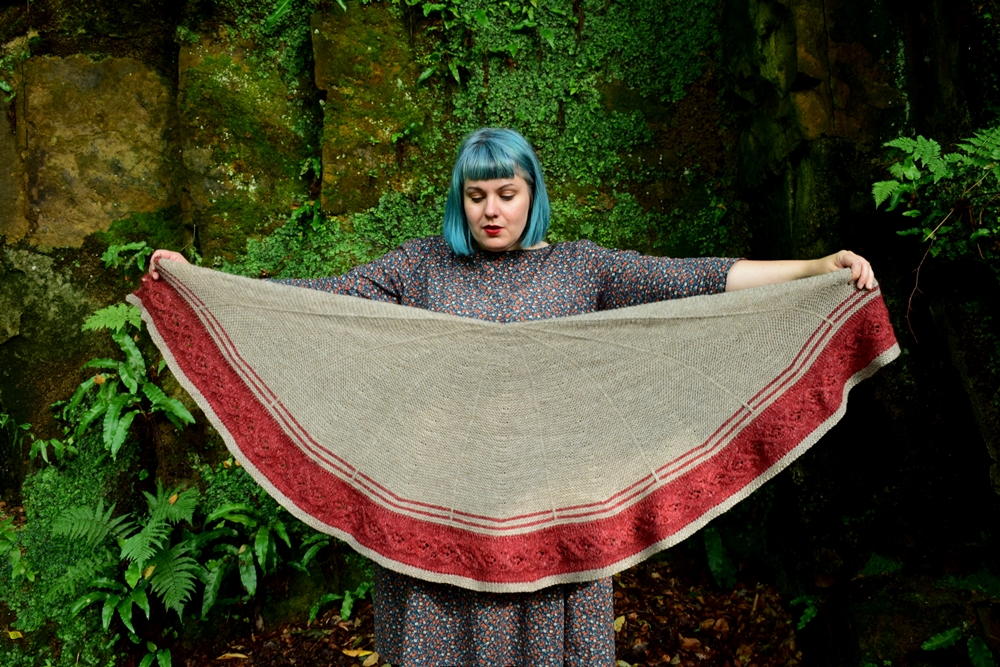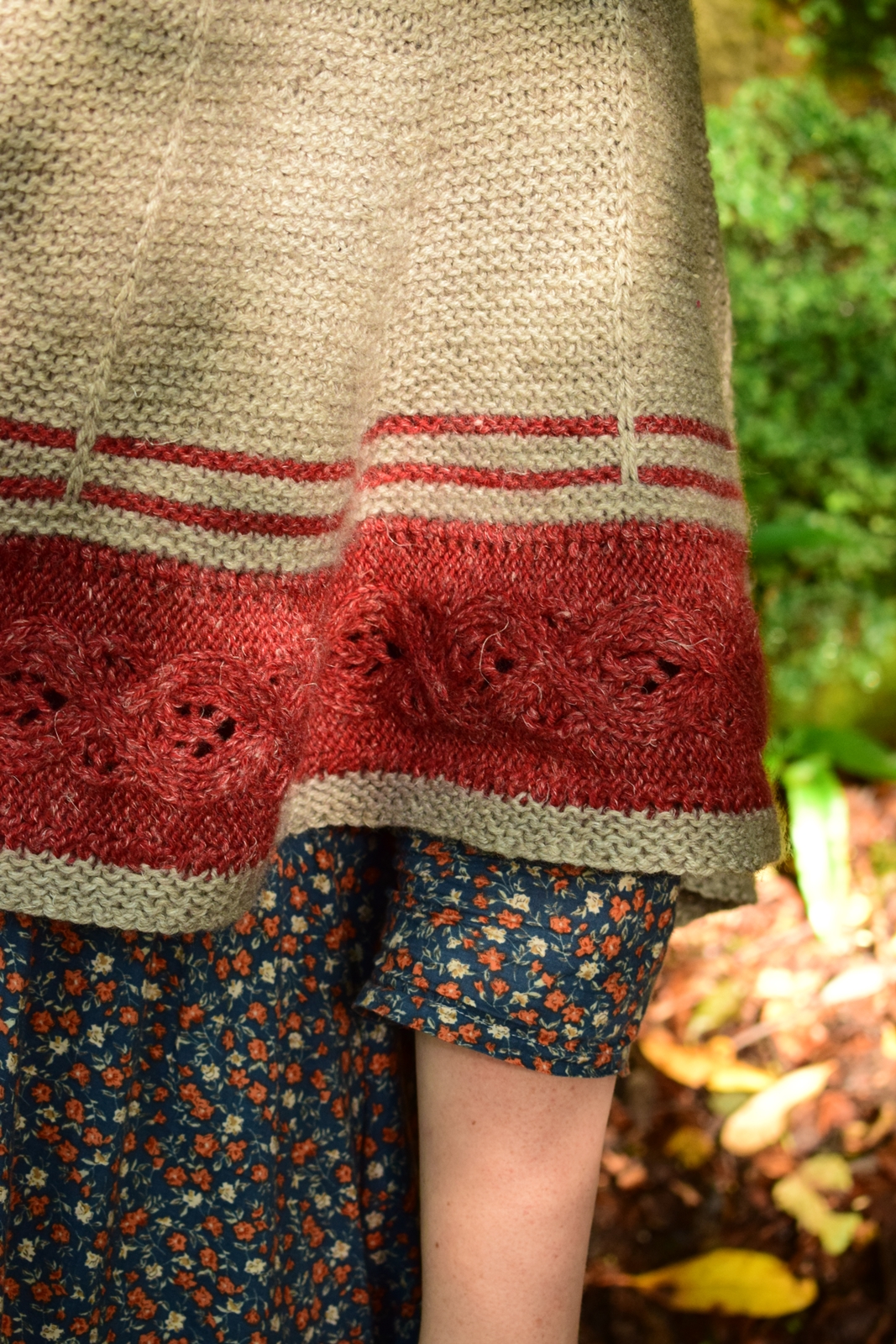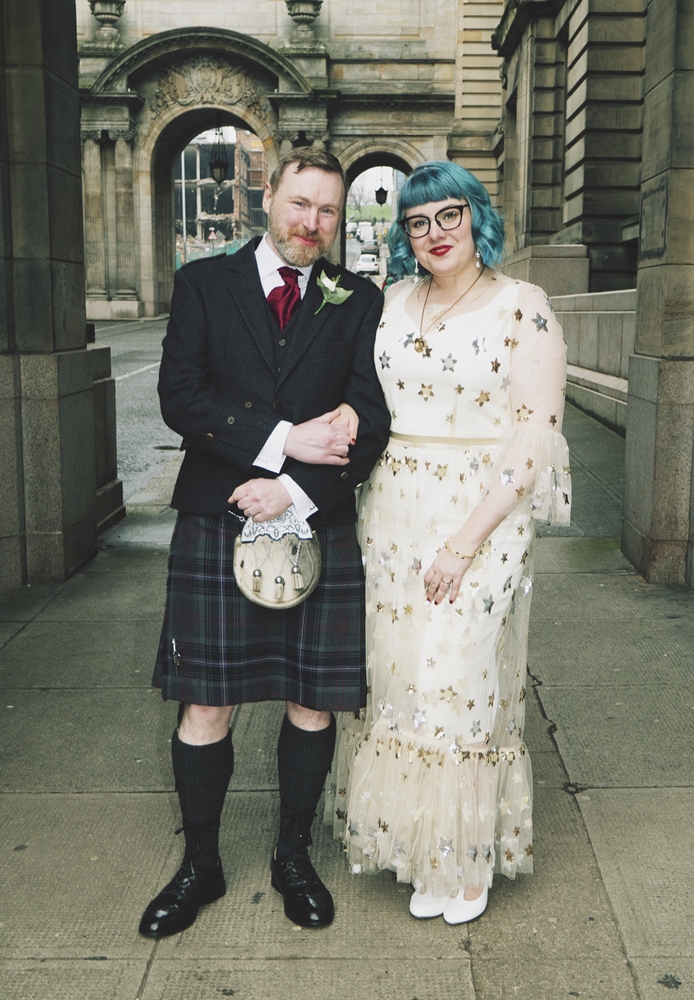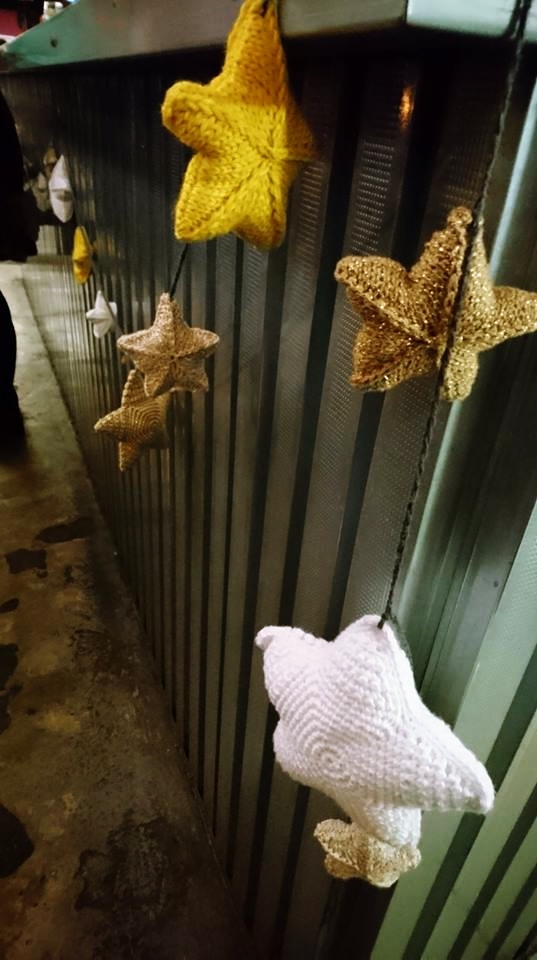The knitting industry is finally talking size inclusivity. While some designers and magazines have long worked with a large range of sizing, it is unfortunately not rare to come across patterns that operate within a narrow small/medium/large perimeter. This looks to be about change. Companies and designers are now thinking about expanding their size ranges, so it will be possible to find patterns that go beyond a 50” bust. As both a designer and a plus-size person, I welcome this discussion and these changes.
And I have some tips for both designers who want to design size inclusive patterns. I also have some tips for plus-size knitters.
Hi, I’m Karie and I’m a knitwear designer. I used to be one of those knitters who’d spend days going through Ravelry project pages and social media before deciding to knit a garment. I have decades of experiences trying to navigate fit and sizing, thanks to my body never neatly fitting into any one size. In 2018 I wrote a blog post with tips on how to choose patterns when you are a full-busted person. I am also currently writing a series on the handmade everyday wardrobe over on Patreon.
First, some ground rules:
This is not a post about modifying patterns. There are tonnes of workshops, books and articles out there. Google is your friend.
This is not a post about how to make yourself look slimmer or whatever. I’m a big fan of making peace with our own bodies because our bodies are amazing & carry us through life.
I am not here for body-shaming, and any comments about ‘real bodies’ or ‘real women’ will be moderated. Seriously, don’t be a jerk.
Tips For Designers:
Learn how to grade properly
This may seem like an intuitive place to start, but I have seen far too many patterns skip this basic step.
Grading is when you calculate different pattern sizes. It is pure maths and, if you do it properly, it can be incredibly satisfying. When I grade I use anything from 9 to 13 different measurements across the upper body to figure out a size. This is basic stuff like bust size, arm length and waist size to shoulder width, cross-back width, elbow-to-wrist length. Getting the numbers to work is a lot of fun.
Many people like to start from bust size and grade from that point out in 2”/5 cm intervals. And many start from the smallest size and grade upwards. This is problematic as the larger sizes will then begin to not fit correctly. Arms do not miraculously begin to grow longer just because it’s a larger size. Necklines do not need to be super-wide just because someone has a 52” bust. Likewise, many upper arms appear to be too tight in larger sizes.
So, invest in learning how to grade properly. There are courses and books that will teach you, but also look at other designers’ patterns (including those written by plus-size designers as we tend to understand our own bodies)
Think about the wearability & functionality of the garment
Sure, a garment can look fabulous in photos but if it is difficult to wear, people will not want to invest time and money in making the design.
An example: the brown colourwork cardigan I am wearing in the photo above is one of the most beautiful pieces I have ever made, but I rarely wear it. The designer placed a 4-strand colourwork pattern right across the bust which makes it hard to breathe when I’m wearing the garment. The fabric is dense and inflexible right at the point when it needs to give the wearer most flexibility. The pattern has the same issue with the same 4-strand pattern right by the elbow/upper arm section which makes it difficult to use your arms. Arguably it is less of a problem at the lower end of the sizing range but once you get to L(!) and above, it present both a wearability and functionality problem.
Does your design have features that will only work for one end of the size range? Can you ensure basic functions just as being able to move and yes, I can breathe across all sizes? These are questions you need to think about before you begin to grade.
Aesthetics
Yes, I put aesthetics all the way down here because I’m not going to mess with your artistic vision.
However, think about the different sizes as canvases of differing sizes. You have more space on a larger canvas, so you may need to reconsider your artistic vision if it starts on a small canvas. Let me explain.
Imagine designing a cabled jumper. You have charted and swatched a gorgeous cable and your sweater is going to feature three of those cables going down the front. This looks incredibly beautiful in your chosen sample size (let’s call it the 30” size). Those three cables will look incredibly lonely and adrift on a sea of reverse stocking stitch in a 54” size. You need to reconsider your design. Maybe have 5 cables or 7 cables on the 54” size? How will that work with your neckline where you’ve artfully had those 3 original cable meet and then split?
In other words: If your artistic vision only works on small canvases, maybe reconsider that artistic vision.
Maybe also ask yourself why you start out by painting on small canvases and not a mid-size canvas? Or a large canvas? Can you change your artistic practice?
Pattern Writing
Technical writing is a topic close to my heart and one which needs to be part of the size inclusivisity discussion. It’s great if you have managed to design and grade a wearable pattern that runs over 24 sizes .. but can you write it? How can you make it easy for a knitter to follow a pattern which is that inclusive? How will you ensure that the numbers don’t all blur together and it becomes nigh impossible to follow your instructions?
(I’ll just drop in here and say that I teach pattern writing, but that’s another story)
Sit down and work out a strategy for how you will handle this. Will you separate the sizes out in categories or handle it visually by having a typographic hierarchy? Seek out designers who are used to offering a large range of sizes and analyse how they handle the glut of information. What works for you and what doesn’t work for you? Contact your technical editor and spend some money on talking it through with them. Please just don’t dump all your numbers into a word doc and call it a day. Part of the designer day job is knowing how to present complex information in a simple way.
Tips For Knitters
Understand Your Body
I don’t know about you, but I used to ignore my body a lot. I didn’t want anything to do with it. It was there, I filled it with biscuits, and I put some clothes on. Then I realised that my body is not an alien blob, it is not my enemy, and I have to understand my body if I am to make things that fit it well.
You are more than just your bust size.
Speaking from experience (and as someone who rarely sees her feet), it may seem that the bust dominates everything but it is simply not true. You are also your shoulder width, your waist line, your hips, the length of your torso, and the ratio of your arm length to your torso length. And that’s just scratching the surface! When I design garments, I take all those things into consideration instead of just zeroing in on my bosom and figuring out how to accommodate it.
Decide on a size based upon your top/high bust size, rather than your full bust measurement.
High street shops and independent pattern designers work with a large set of average measurements, and the measurements are typically graded to a B-cup. If you wear a larger cup size and you go for your full bust size when determining which size to knit, that’s when everything becomes too big. Take your top/high bust measurements, add roughly 2” (5cm) to that measurement and look for the size corresponding to that. That should give you an idea of which size you should knit. I am always so surprised when I do that because I always forget that my full bust skews my sizing.
So, take that step to understanding your body and how you shouldn’t decide upon a size just from one set of measurements. You’ll thank yourself.
Understand Your Body Shape
So, you are plus-size. That doesn’t mean you are just an alien blob (for years I felt I was one). Plus-size people come in all kinds of shapes. We are not all the same. Get naked and stand in front of a mirror. Where do you carry most of your weight? Stuff all the cutesy “pear”, “hourglass” etc names and just ask yourself: where do you carry most of your weight? Are you tall? Top-heavy? Wide shoulders? Big bum?
I have a good friend, Estelle, who looks super-amazing in her tunics. If I wore them, I’d look like a Victorian orphan. If I forced her to wear one of my cropped cardigans, she’d disown me. We are both plus-sized but we look very different.
So, own that amazing body of yours.
(You know, shaming women’s bodies is not only a big industry, but there are tonnes of people wanting to police what you should or should not wear (some of them very well-meaning and probably related to you), and you need to tune them out.
No matter what you wear, people will have opinions. The worst opinions you will hear might come from yourself, truth be told. When you hear yourself saying “oh no, I cannot wear that” ask yourself if what you are saying is the result of years of living in a world where bodies are politicised, shamed and sexualised, or if it is truly a reflection of what you see in the mirror.
If in doubt, head to your nearest high street store and locate a garment similar in shape and fit to the one you are thinking of making. A cropped oversized jumper? A fitted knitted dress with a scoop-top? Try that sucker on and see how it looks (and not how you think it looks). If your local high street shops don’t stock anything like that, find an online shop with easy returns. Or look in your friends’ wardrobe.
According to many well-meaning people, I should not wear cropped tops, drop shoulders or stripes. Guess what? One of my favourite tops is a cropped drop-shoulder striped top. I wear it and I feel good. And because I feel good in my top, people compliment me when I wear it.)
Modifications Are Great But ..
I am not going to talk about how to modify a garment but I’m going to touch upon why modifying a garment is a good skill set to have (and also less daunting than you think)
First of all: I believe strongly that it is within the designer’s remit to provide you with a pattern that should work for most people. I believe in a designer supplying an inclusive size range and giving notes on how to work basic modifications such as lengthening/shortening the body and/or sleeves. If a designer insists on giving you three sizes with no notes on how to make the garment fit you better, then don’t give them any money. Designers need to do better (and I say this as a designer myself).
Having said that, there will never be a pattern that magically fits every single body out there. And so you will probably need to look into modifications. This can be anything from adding more rows to make a sweater longer or making a buttonband deeper to accommodate a full-bust to adding short-row shaping or resizing sleeve caps. There are many tutorials out there and you can also take classes.
Learning how to modify a garment is a really empowering thing, honestly. It will teach you so much about your own body and you will definitely realise that you are not an alien blob. High street fashion teaches us all from a young age that our bodies are wrong in a myriad ways. Making your own well-fitting clothes is you taking back that power.
But if you start by choosing the right pattern and the right size, you are 99% of the way to making something you’ll treasure.
(Remember also that knitted fabric tends to be flexible and has a moderate amount of give. You may not need that short-row shaping despite all. I see many people adding short-row shaping no matter the garment and often that garment doesn’t need it. Even if you are a G-cup or at the very top end of the size range.)
Phew. This ended up a lot longer than I anticipated. Come join the discussion either here or on IG. I want to hear from you and your experiences. Remember, as a maker you hold the power to change things. Whether you are a designer or a knitter, you can create things that challenge the status quo of a very rigid idea of what an acceptable body looks like. Let’s go.
























